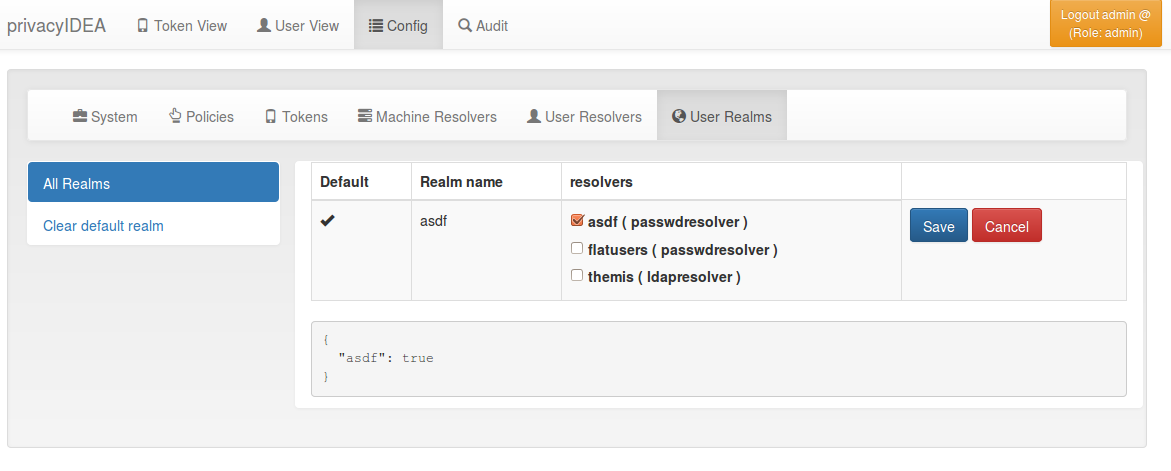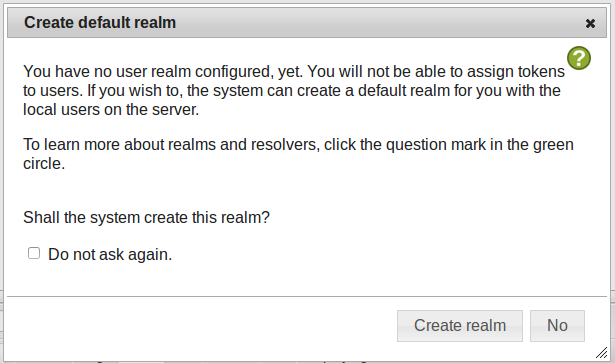Realms¶
Users need to be in realms to have tokens assigned. A user, who is not member of a realm can not have a token assigned and can not authenticate.
You can combine several different UserIdResolvers (see UserIdResolvers) into a realm. The system knows one default realm. Users within this default realm can authenticate with their username.
Users in realms, that are not the default realm, need to be additionally identified. Therefor the users need to authenticate with their username and the realm like this:
user@realm
List of realms¶
The realms dialog gives you a list of the already defined realms.
It shows the name of the realms, whether it is the default realm and the names of the resolvers, that are combined to this realm.
You can delete or edit an existing realm or create a new realm.
Edit realm¶
Each realm has to have a unique name. The name of the realm is case insensitive. If you create a new realm with the same name like an existing realm, the existing realm gets overwritten.
If you click Edit Realm you can select which userresolver should be contained in this realm. A realm can contain several resolvers.
Autocreate Realm¶
If you have a fresh installation, no resolver and no realm is defined. To get you up and running faster, the system will ask you, if it should create the first realm for you.
If you answer “yes”, it will create a resolver named “deflocal” that contains all users from /etc/passwd and a realm named “defrealm” with this very resolver.
Thus you can immediately start assigning and enrolling tokens.
If you check “Do not ask again” this will be stored in a cookie in your browser.
Note
The realm “defrealm” will be the default realm. So if you create a new realm manually and want this new realm to be the default realm, you need to set this new realm to be default manually.


